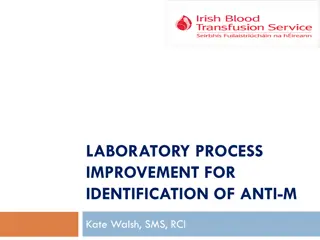Insights from the 2017 Applied Research in Crime and Justice Conference
This conference delved into the preferences and disparities between jurors and judges in sentencing outcomes in Victoria, Australia. Researchers examined whether jurors tend to be more lenient or severe compared to judges, the impact of crime types on juror decisions, and the correlation between sentencing purposes chosen by jurors and the severity of suggested sentences. The study also explored how judges and jurors rank sentencing purposes. Additionally, survey results revealed that a majority of jurors favored imprisonment for offenders.
Download Presentation

Please find below an Image/Link to download the presentation.
The content on the website is provided AS IS for your information and personal use only. It may not be sold, licensed, or shared on other websites without obtaining consent from the author.If you encounter any issues during the download, it is possible that the publisher has removed the file from their server.
You are allowed to download the files provided on this website for personal or commercial use, subject to the condition that they are used lawfully. All files are the property of their respective owners.
The content on the website is provided AS IS for your information and personal use only. It may not be sold, licensed, or shared on other websites without obtaining consent from the author.
E N D
Presentation Transcript
Applied Research in Crime and Justice Conference The Applied Research in Crime and Justice Conference 2017 Findings from the Victorian Jury Sentencing Study 2017 Funded by Australian Research Council Discovery Project DP 130110154] Faculty of Law Warner, Davis, Freiberg, Spiranovic and Cockburn.
Applied Research in Crime and Justice Conference 2017 Why use juries? Jurors will be: well informed about the facts of the case; less influenced by stereotypes; and the jury is a respected democratic institution.
Applied Research in Crime and Justice Conference 2017 AIMS 1. In Victoria, are jurors preferred sentences more severe or more lenient than those given by judges?
AIMS Applied Research in Crime and Justice Conference 2017 2. What is the magnitude of the difference between the sentences given by judges and jurors?
AIMS Applied Research in Crime and Justice Conference 2017 3. Does the type of crime affect the proportion of jurors who are more lenient or more severe than the judge?
AIMS Applied Research in Crime and Justice Conference 2017 4. To compare jurors sentencing purpose preferences with those of judges: how do judges rank purposes? how do jurors rank purposes?
AIMS Applied Research in Crime and Justice Conference 2017 5. Is there a relationship between juror s purpose choice and the severity of their suggested sentence?
METHOD Applied Research in Crime and Justice Conference 2017 STAGE ONE: After a guilty verdict.
Victorian Jury Project results survey 1 Applied Research in Crime and Justice Conference 2017 Survey 1 QA1a. What sentence do you consider the offender should receive in this case? - 990 jurors provided a response to this question - 631 (64%) chose imprisonment - 366 (58% of the 631) specified a non-parole period
Method STAGE 2: After sentence STAGE 3: Face to face interviews STAGE 4: Third survey
124 CRIMINAL TRIALS Sentencing remarks for 122 trials 987 JURORS COMPLETED SURVEY 1 864 agreed to stage 2 123 declined stage 2 425 COMPLETED SURVEY 2 153 completed survey 3 50 interviewed
Results: jurors sentence vs judges sentence 61.7% of jurors were more lenient than the judge 2.4% imposed the same sentence as the judge 35.9% were more severe than the judge
Results: jurors sentence vs judges sentence 93% of judges sentences were custodial 86% of jurors sentences were custodial
Results: jurors sentence vs judges sentence Even when the offender had no relevant prior convictions, 57% of jurors sentences were more lenient than the judges sentences.
Results: jurors sentence vs judges sentence Stage 2: How appropriate was the judges sentence? Very appropriate: 55% Fairly appropriate: 32% Fairly inappropriate: 10% Very inappropriate: 3%.
Results: What is the magnitude of the difference ? Applied Research in Crime and Justice Conference 2017 Jurors overall were on average more lenient than the judge by 12 months.
Results: judge and jurors sentence by type of offence 80 71 68 70 More lenient Same in severity More severe Percentage of jurors 60 50 49 50 40 28 26 30 20 6 10 1 1 0 Sex offence trials Violent offence trials Other offence trials
Results: Stage 2 appropriateness of the judge s sentence by offence type Sex offence Violent offence Other offences 70.0 65.0 Percentage of jurors 58.0 60.0 54.3 45.7 50.0 42.0 40.0 35.0 30.0 20.0 10.0 0.0 Very appropriate Fairly appropriate or Very/fairly inappropriate
Results: General attitudes to sentencing for violent, property, drug and sex offences. Much too tough A little too tough About right A little too lenient Much too lenient 60.0 55.6 48.9 50.0 44.9 Percentage of jurors 40.0 34.3 34.0 32.3 29.0 27.8 30.0 26.2 24.2 20.0 15.4 12.6 7.3 10.0 2.6 2.1 0.9 0.7 0.6 0.2 0.2 0.0 Violent offences Property offences Drug offences Sex offences
Results: Sentencing Purposes Sentencing Act 1991 (Vic) s 5(1): the only purpose for which sentences may be imposed are: (a)to punish the offender .. (b) to deter the offender or other persons .. (c) to rehabilitate the offender .. (d) to manifest denunciation by the court .. (e) to protect the community .. ; or (f)a combination of two or more of those purposes Applied Research in Crime and Justice Conference 2017
Results: Sentencing Purposes Applied Research in Crime and Justice Conference 2017 Judges commonly refer to between three or four purposes in their sentencing remarks. Judges select one predominant purpose in a third of cases Their favourite purpose was general deterrence.
Figure 1. Proportion of judges mentions of importance by sentencing purpose (n=135)* Applied Research in Crime and Justice Conference 2017 15% 21% Denunciation Retribution 13% Specific deterrence 13% Incapacitation Rehabilitation 35% General deterrence
Results: which purposes were favoured by jurors? Applied Research in Crime and Justice Conference 2017 1. To make sure the offender gets the punishment they deserve. 2. To teach the offender a lesson so they won t do it again. 3. To discourage other people from offending by making an example of the offender. 4. To rehabilitate the offender so they do not offend again 5. To protect the community by keeping the offender off the streets
Results: which purposes were favoured by jurors? Applied Research in Crime and Justice Conference 2017 6. To compensate the offender an/or the community 7. To express community disapproval of the offender s behaviour.
Results: which purposes were favoured by jurors? Applied Research in Crime and Justice Conference 2017 Denunciation 19% 29% Retribution Compensation 2% 12% Incapacitation 15% Specific 14% Rehabilitation 9% General deterrence
Results: purposes Applied Research in Crime and Justice Conference 2017 Juror 366: I felt very strongly about that, it should be seen that bouncers just can t do anything they re not immune from the law.
Results: purposes Applied Research in Crime and Justice Conference 2017 Juror 757: [ice fuelled armed robbery] I don t think it is going to deter much. I m pretty sure that most research shows that general deterrence is not effective for most crimes. Juror discouraging other people from offending would really only work if you put it on a billboard on Fed Square every morning . 17 [aggravated burglary/asault] said
Results: is a preference for censuring rationales related to more severe penalties Applied Research in Crime and Justice Conference 2017 45.0 Juror more severe Juror more lenient or same in severity 38.4 40.0 35.0 30.0 Percentage 25.5 25.0 21.7 19.7 18.5 20.0 17.7 16.0 15.0 9.5 9.2 8.8 10.0 7.8 7.0 5.0 0.0 deterrence Rehabilitation deterrence Retribution Denunciation Incapacitation Individual General
Key implications Applied Research in Crime and Justice Conference 2017 1. Portrayals of a punitive public are misleading: 62% of jurors suggested a more lenient sentence than the judge imposed Jurors were more likely to suggest a non-custodial sentence than the judge At Stage 2 86% said judge s sentence was appropriate (55% very appropriate)
Key implications Applied Research in Crime and Justice Conference 2017 2. There is a punitiveness gap between judges and jurors in relation to CSA of children under 12: For CSA of younger children 63% suggested a more severe sentence and only 36% said the sentence was very appropriate.
Key implications Applied Research in Crime and Justice Conference 2017 3. The general view that sentences are too lenient is hard to shift and providing additional information does not have much effect.
Key implications Applied Research in Crime and Justice Conference 2017 3. Jurors have a stronger preference for each of the expressive purposes 4. Judges choice of sentencing purposes is not in step with jurors preferences
Key implications Applied Research in Crime and Justice Conference 2017 5. Using jurors to explore public attitudes to sentencing is a useful addition to the suite of methods of exploring public opinion.
Further findings Aggravating and mitigating factors Applied Research in Crime and Justice Conference 2017























